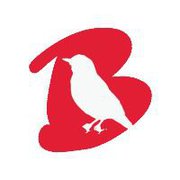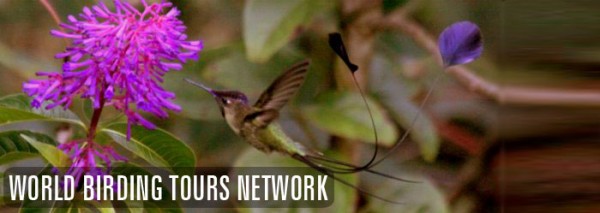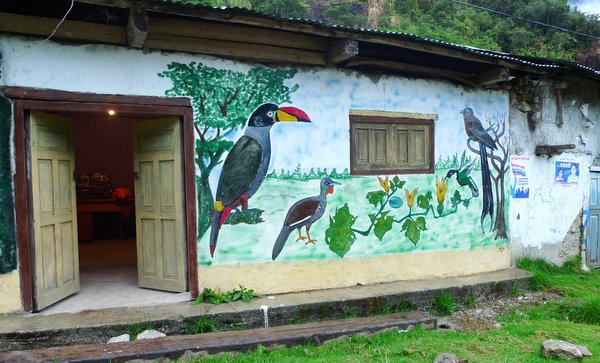Ideas – Birding Peru Newsletter
Eight ideas to make birding huge.
Most of the time I am busy either guiding Kolibri Expeditions tours, making arrangements for the tours (although Victor has been relieving me some lately) and conversations via email with clients. But sometimes, I get ideas – that totally consume me. And it is particularly one of those ideas that have kept me off my own blog lately.
The idea of BirdingBlogs.com.
And within Birdingblogs new ideas have formed.
I thought in this newsletter, that I’d present some of the ideas that have consumed me. It is not really sane to get this many ideas, but I hope that with considerable delegation at least some of these ideas can become something grand and live their own life and inspire others. Ideas do that!
You can’t own an idea.
The idea becomes everyone’s.
If you want to take part in any of this, check out the links of each item. Leave comments below or send me an email if you want contribute in any way.
1. Birdingblogs.com – the idea.
 After having finally understood the idea of blogging, I came to the conclusion that to have a successful birding blog one needed to
After having finally understood the idea of blogging, I came to the conclusion that to have a successful birding blog one needed to
- Supply top content
- supply hot birding news
- publish daily
- upload lots of pictures
- be somewhat provocative, edgy, funny or witty – some of the time
- share – everywhere
- build a community of followers in the social media platforms
But to be on top of things – and run a business at the same time is simply too much. The solution was to gather several writers to one blog. Birdingblogs.com. Even if we’ve slacked a bit lately, we are getting a lot of traffic – and the future looks very bright as GrrlScientist Deborah Bennu has been added to the team. A bit over a month ago, Charlie Moores, previously at 10000birds also joined us. The other birdingbloggers on this site are Kenn Kaufman, Tom McKinney, Dawn Fine, Dale Forbes, Rebecca Nason, Rich Hoyer, György Szimuly, Susan Myers and myself. It is a great team. It is a bit intimidating to be among these great writers and photographers. At the end of this post I shall present some of the work of my partner bloggers.
Don’t forget to “Like” us on Facebook, follow us on Twitter and subscribe to our RSS feed or by email. We are committed to provide you with top birding content every day.
2. Avistar Peru. Birding Festival in Lima Peru.
 I always felt it was sort of my duty to “teach” Peruvians about birding. How pretentious!
I always felt it was sort of my duty to “teach” Peruvians about birding. How pretentious!
Fact remains. Can you imagine that there is no national organization for birders in Peru. In spite of this, there are some good signs that something is happening. I know of several local bird and nature clubs in Puerto Maldonado, Chiclayo and Iquitos. The Spanish language site www.avesdelima.com is around position 28 on Fatbirder Top1000 website about birding and gets around 1200 unique page views daily. Surely, there is a latent interest among Peruvians to discover birding and nature in general. Lima with 8 milion inhabitants is the place to start.
We are copying a concept already active in Sao Paolo, Brazil – Avistar Brasil. We shall bring Peruvian people who like nature together in the first Peruvian Birding Festival for the general public. During 3 days Nov 2-4 at PARQUE KENNEDY in Miraflores, there will be a trade fair with 22 stands, activities for kids, photo and art exhibitions and workshops covering topics such as the Wetlands of Pantanos de Villa, the water drainage of the Rimac valley and a call to start a Peruvian version of Audubon Society. During the weekend Nov 5-6 we shall do several excursions in the vicinity of Lima, including trips up the Santa Eulalia Valley to see the Condor and a pelagic. If you are around you don’t want to miss the opportunity. And if you have something to contribute to the workshops let us know. You find more information in this recent blogpost about Avistar Peru.
The Neotropical Ornithologicl Congress is held in Cusco Nov 8-14, why it is a good idea to combine the two events.
3. Birdingblogs top list
![]() I am sure you have heard of Fatbirder Top 1000 and NatureBlogNetwork. Here you find an attempt to rank birding sites and natureblogs. Having created the multi-author blog, I thought it would be great if we could share some of the lime-light with those birders who still blog on their own. They are quite heroic – and I admire them. There are now over thirty birdingblogs signed up on the birdingblogs top list. If you have a blog about birding that you write yourself, please submit. Read more about the idea and the rules for the toplist here.
I am sure you have heard of Fatbirder Top 1000 and NatureBlogNetwork. Here you find an attempt to rank birding sites and natureblogs. Having created the multi-author blog, I thought it would be great if we could share some of the lime-light with those birders who still blog on their own. They are quite heroic – and I admire them. There are now over thirty birdingblogs signed up on the birdingblogs top list. If you have a blog about birding that you write yourself, please submit. Read more about the idea and the rules for the toplist here.
4. World Birding Tour Network
 This is a similar idea. Apart from getting overall and regional toplists for number of visitors to birdwatching tour operator sites, this idea when built out will become a bird tour operator directory. Useful, for clients – and useful for inter company relations. There really should be more networking between birding companies. Read more on the same blogpost as above and sign up to the toplist here.
This is a similar idea. Apart from getting overall and regional toplists for number of visitors to birdwatching tour operator sites, this idea when built out will become a bird tour operator directory. Useful, for clients – and useful for inter company relations. There really should be more networking between birding companies. Read more on the same blogpost as above and sign up to the toplist here.
5. Virtual BirdFair
Some of you may have seen this already last year. I love the idea of the British Birdfair – where the birders can find everything they need at one place and at the same time there is loads of money collected for conservation. Participating does come at a price, though. Not only does it become extremely expensive for those of us in the Southern Hemisphere, but one carbon footprint we leave behind is huge. What if there was an alternative way? Could you participate virtually? How about an online virtual birdfair? Not a competition to the real thing, but as a compliment. The idea is quite limitless. And again it would be used to raise money to a conservation project. Also, it does not need to cover only the British Birdfair, but all the major fairs and festivals around the world. I’d like to get 10 people together that could develop this idea together. Check out more on the virtual birdfair in this blogpost. And do provide feedback, and let me know if you want to be on the team.
6. Satipo road Lodge
 Show the community an example similar to their reality, which has become a booming eco-tourism project. Well, this is what Kolibri Expeditions did, when we brought 6 campesinos from Central Peru to Mindo in Ecuador. Here are two older posts that gives you the right background to this idea.
Show the community an example similar to their reality, which has become a booming eco-tourism project. Well, this is what Kolibri Expeditions did, when we brought 6 campesinos from Central Peru to Mindo in Ecuador. Here are two older posts that gives you the right background to this idea.
The project is running well, and RainForest Partnership is doing important work in the area. Right now there are 6 beds with linen in a temporary room, but the lodge will soon start to be built. We assist with booking for independent visitors. It is essential that the visits are coordinated before arrival.
The area is in need of a new name. In Rainforest Partnership’s perspective Satipo road is not good to use when raising funds from non-birders. They have used the name Pampa Hermosa, which would have been logic as it is the name of the district covering all the communities. The problem is there is already two Pampa Hermosa in Peru known to the birders: Pampa Hermosa near San Ramon, which has a lodge and a reserve with the same name nearby; and Pampa Hermosa in Ucayali, which is the last settlement to travel up the Cushabatay river to search for Scarlet-banded Barbet in mountains of Cordillera Azul. We don’t need yet another Pampa Hermosa.
On Kolibri Expeditions Facebook page you may now vote for a new alternative if you are on Facebook. Vote here! I’ll be interested in seeing which of the 3 names proposed you prefer. Or maybe you will come up with a better suggestion.
7. Birding is changing.
This is an old post about “How to become a birder in the 21st Century“. The notion that the birder of tomorrow (which is already here), is not so interested in only seeing. They want to photograph. Bring something home at the end of the day. An observation will only stick in memory – at best – and may be soon forgotten, but a photo sticks forever as it can be shared and it can be viewed over and over again. We recently had a Thai group visiting us in Peru – and although they called themselves birders, they were more interested in photographing birds than getting a long list. My guess is that we shall see more of this. Our birding tours are now complemented with bird photography tours.
This means, if you allow me to return to the topic Avistar Peru above, that if we are to convert Peru’s masses to birders, we have to bird as much through cameras than binoculars. When writing manuals for birding for beginners which we intend to do in Lima, the text should focus on what kind of cameras are good for birding. It is more likely the newbie invests first in a camera than a pair of binoculars. If we old school birders don’t realize this, we will see birding getting less and less active users in the younger generations. But, if we adapt to the new reality, we could create armies of people that care about nature and are in need of birding services. Good for businesses (as mine), good for conservation and good for rural communities that have special birds.
8. Birding infrastructure, fidelity and innovation
I think, Peru will become the birding Mekka eventually. There are more birds here than anywhere else except for Colombia. The combination with archeology, fantastic food, culture and great nature is simply unbeatable. But it will not happen overnight and it is clear that the Peruvian State organ PromPeru won’t lead, although they have done some showy tradeshows the last decades. It is up to entrepreneurs with a broad vision to make it happen. We need more birders to come to Peru in order to make birding businesses profitable and allowing rural areas to opt for conservation and eco-tourism. But to get more visitors Peru needs more specific infrastructure for birders.
My idea is that we could do this together. Peru is such a huge country that allows for many trips. If you consider using our services, you can save a lot of money when you sign up to Kolibri Expeditions’ VIP Club. This is a very novel idea and I’d like to get your feedback. Everone gains. You save money, Kolibri Expeditions secures future clients, infrastructure for birders is created and communities start caring about conserving nature as they provide services for visiting birders. I have prepared a VERY SPECIAL OFFER. It is time limited, so you have best to act quickly. Read more …………
The Birding Bloggers
Below follows the descriptions of the bloggers on birdingblogs. The link on the name gives you the latest posts of that author. I also enclose one of my favorite posts for each blogger. Do check them out, because they are great posts.
Tom McKinney has been birding for over 20 years and has birded on every continent, other than the continents he’s not yet been to. He is famed for having found Britain’s first Gray’s Grasshopper Warbler and then waking up and realising it had all been a beautiful, beautiful dream. When not birding he enjoys going to Ladbrokes and writing short biographical entries about himself in a 3rd person voice.
Here is a funny post about how to identify and mis-identify plugs.
Dale Forbes has always felt at home in nature. He started birdwatching as a young kid. Then got in to ornithology. Then more conservation biology. He grew as a birder, loving it more with every day. He now works for Swarovski Optik making awesome toys for birders (product/marketing manager) and is an obsessed digiscoper. Dale writes his regular post Birdingblogs.com every Sunday. All his posts contain mindblowing digiscoping images, however the feature post I want to highlight here is slightly comical: British birders – a separate subspecies.
 Kenn Kaufman was captivated by birds at the age of six, Kenn Kaufman burst onto the North American birding scene as a teenager, hitch-hiking around the continent in pursuit of new species; those adventures were later chronicled in a book, Kingbird Highway
Kenn Kaufman was captivated by birds at the age of six, Kenn Kaufman burst onto the North American birding scene as a teenager, hitch-hiking around the continent in pursuit of new species; those adventures were later chronicled in a book, Kingbird Highway, which has become a cult classic. Kenn went on to lead birding tours on all seven continents and to become a prolific writer. He’s now a field editor for Audubon magazine, on the editorial board for WildBird, and a columnist for Birder’s World and Bird Watcher’s Digest. His own Kaufman Field Guides series includes volumes on North American birds in English
and Spanish
, the recently acclaimed second edition of Kaufman Field Guide to Advanced Birding, butterflies
and mammals
. Kenn lives in northern Ohio with his wife, Kimberly, who is currently executive director of the Black Swamp Bird Observatory. His most recent post on Birdingblogs about the new Warbler taxonomy hit the ceiling in numbers of hits. In spite of this, I’d like to highlight his environmental fight against windpower at the wrong place: Location matters.
Rebecca Nason is a passionate female bird photographer, birder & bird ringer currently based on the Suffolk coast, UK. She has been a freelance bird photographer, tour-leader & ecologist since 2005 after working on Fair Isle, Shetland as Assistant Warden & Seabird Officer for 2 years, a place she now regards as a second home! Rebecca enjoys world travel & promoting birds & conservation through imagery, tour-leading, ecology work & talks. Her photography is simply mind blowing. Jump into any of here posts and you will see. Here is a favorite of mine: The Puffins on Fair Isle.
Dawn Fine is a birder, a blogger, hiker, Nature lover, mushroom picker, Full-time RV-er since September 2001, Blogaholic and founder of “Birders who Blog, tweet and chirp”. Dawn is a master to connect with birders and nature lovers on Facebook and Twitter. She reads and comments on collossal amounts of blogs. She is our window to other bird bloggers, whom she shares with us once every month presenting awesome bloggers. It is quite hard to chose among such many brilliant presentations of other bloggers, but one that I like a lot is the recent one about Bathrobe Birder Robin Robinson of The Back Story – My controlled Chaos.
Rich Hoyer is first and foremost a birder whose subconscious registers and identifies every bird he hears, even when he isn’t birding. But he actually started keying out wildflowers , catching reptiles, and raising butterflies before he discovered birding at age 14, and has since branched out to enjoy photographing and identifying dragonflies, grasshoppers, spiders and almost anything else alive. For the past 13 years he has been leading birding and natural history tours for WINGS. Among his regular destinations are Bolivia, Brazil, Peru, the Galapagos, Costa Rica, Mexico, and Jamaica. Originally from Oregon, he currently lives in Tucson, Arizona. Rich has been blogging a lot about these places on Birdingblogs. They are all great posts. One recent post that was extremely useful to me was Digiscoping with an iPhone.
Charlie Moores has been blogging since 2004 and (he thinks) has not yet run out of things to talk about. He used to be on the prime birding site 10000birds, but now he is with us and his own blog/podcast Talking Naturally as well. We are very lucky to have him. His conservation engagement is legendary. One of the most important posts this year is the one he wrote on Malta: How do we solve a problem like Maria Malta
GrrlScientist is an evolutionary biologist, ornithologist and science writer. She write a science blog for the Guardian, another one for Nature, and a more personal blog at Scientopia. And now she writes at Birdingblogs.com. She has only been with us for three weeks, but we hope she shall provide some great articles about birds and science. The first one out was about the sex-life of White-throated Sparrows. It is not unusual that there are different reproduction strategies within a specific bird species, but here the strategy has been nailed down to a specific chromosome. Mind blowing article on science that everyone can understand.
 György Szimuly aka Szimi from Hungary has provided marvelous photography from Hungary and elsewhere. Szimi is fanatic about shorebirds and runs several blogs, webpages and Facebook groups on waders. He lives in Tata, which yearly is a spectacle with over 30000 over-wintering geese. He covered exactly that topic in one of his initial posts: A city as a birding Hot Spot.
György Szimuly aka Szimi from Hungary has provided marvelous photography from Hungary and elsewhere. Szimi is fanatic about shorebirds and runs several blogs, webpages and Facebook groups on waders. He lives in Tata, which yearly is a spectacle with over 30000 over-wintering geese. He covered exactly that topic in one of his initial posts: A city as a birding Hot Spot. Susan Myers is a birdguide formerly for VENT and now for Tropical Birding and flung all over Asia as guide on birding trips. She is the author of Birds of Borneo
Susan Myers is a birdguide formerly for VENT and now for Tropical Birding and flung all over Asia as guide on birding trips. She is the author of Birds of BorneoTop photo: Junin and Silvery Grebe by Alejandro Tello.

